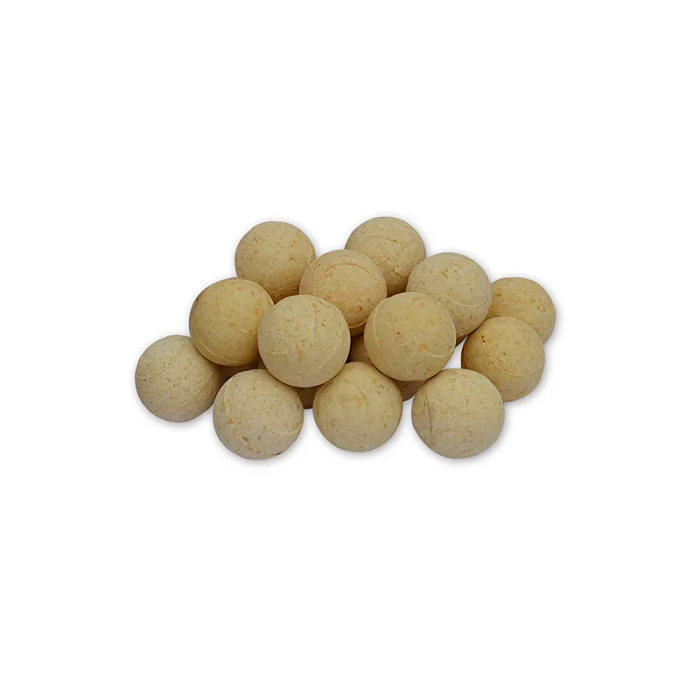Siliceous refractory balls
Classification:
Product Introduction
Siliceous refractory balls are refractory sphericals with silica as the main component, siliceous refractory balls belong to acid refractory materials, and the main component is silicon dioxide (SiO2), and the content is usually more than 92%. These materials are highly resistant to acidic slag but are susceptible to alkaline slag.
1. Material characteristics
1. Resistance to acid slag erosion: Silica refractory balls have strong resistance to acid slag erosion.
2. Thermal stability: Poor thermal stability at low temperatures.
3. High temperature performance: Under the conditions of high temperature and large gradient temperature change, the surface of the siliceous refractory ball is easy to crack, the resistance to alkaline gas dust erosion is poor, the slag bonding phenomenon is serious, and it is difficult to clear the ball.
4. High load softening temperature: The load softening temperature of siliceous refractory is close to the melting point of phosphosphoquartz and cristobalite (1670 °C, 1713 °C).
2. Application
Siliceous refractory balls are mainly used in high-temperature industrial furnaces, especially as a structural material for coke ovens, glass melting furnaces, acid steelmaking furnaces and other thermal equipment. They are used in the high temperature zone of the ball bed in the upper part of the ball bed of the ball hot blast stove, but due to their poor surface cracking at high temperature and poor resistance to alkaline gas dust erosion, there are certain limitations in their use.
3. Material
The material of the siliceous refractory balls is mainly composed of high-purity silica, which gives it excellent resistance to acid slag and a high load softening temperature. Due to their material properties, siliceous refractory balls exhibit good structural strength and air tightness in high-temperature applications.
In summary, siliceous refractory balls play an important role in high-temperature industrial applications due to their unique materials and properties, especially in acidic environments. However, their stability at high temperatures and their resistance to alkaline erosion still need to be improved.
| Projects | Physical and chemical indicators | |
| GQ-92 | ||
| (Si02)/% | ≥ | 92 |
| (Fe2O3)/% | ≤ | 1.4 |
| Apparent porosity/% | ≤ | 24 |
| True density/(g/cm3) | ≥ | 2.3 |
| Normal temperature withstand voltage value/kN | ≥ | 10 |
| Load softening start temperature/°C (100N/ball) | ≥ | 1670 |
Key words:
Siliceous refractory balls
Refractory balls
Related Products
Product inquiry


